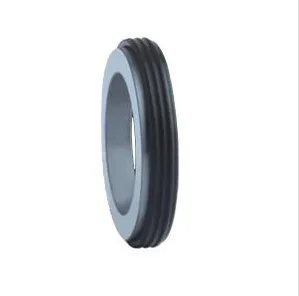Understanding the Role of the Mechanical Seal Stationary Seat in Industrial Applications
2024-12-04
Mechanical seals are essential components in various industrial systems, ensuring that rotating equipment like pumps and compressors operate without leakage. Within this crucial assembly, the mechanical seal stationary seat plays a pivotal role. Often overlooked, it is the foundation of a reliable sealing system. In this blog, we’ll explore what the stationary seat is, its importance, and how to select the right one for your application.
What is a Mechanical Seal Stationary Seat?
The stationary seat is a non-moving component of a mechanical seal system. It works in conjunction with the rotating seal face to form a seal that prevents fluid leakage. Positioned securely within the equipment housing, the stationary seat serves as a stable surface against which the rotating face maintains contact, creating a fluid-tight seal.
Key Functions of the Stationary Seat
1. Leak Prevention: By maintaining a consistent interface with the rotating seal, the stationary seat ensures that no fluid escapes the system.
2. Wear Resistance: Designed to endure friction and pressure, it must withstand significant mechanical and thermal stresses.
3. System Stability: The stationary seat provides structural integrity, anchoring the mechanical seal in place for optimal performance.
Materials Used for Stationary Seats
The performance of a stationary seat depends heavily on its material. Common options include:
- Carbon: Lightweight and self-lubricating, carbon stationary seats are ideal for handling high speeds and temperatures.
- Ceramic: Resistant to corrosion and abrasion, ceramics are excellent for applications involving aggressive chemicals.
- Silicon Carbide: Known for its hardness and thermal conductivity, it is suitable for high-pressure and high-temperature environments.
- Stainless Steel: Often used with other materials, stainless steel provides structural support and durability.
Applications of Mechanical Seal Stationary Seats
Stationary seats are used in various industries, including:
- Chemical Processing: To handle corrosive fluids and maintain containment.
- Oil and Gas: For high-pressure environments where leakage prevention is critical.
- Water Treatment: Ensuring pumps and mixers operate efficiently without leaks.
- Pharmaceuticals: Maintaining sterile environments by preventing contamination.
Factors to Consider When Choosing a Stationary Seat
Selecting the right stationary seat is vital for ensuring system reliability and longevity. Key factors to consider include:
- Operating Conditions: Evaluate pressure, temperature, and rotational speed to ensure the material and design are suitable.
- Fluid Properties: Consider the chemical compatibility of the seat material with the process fluid.
- Seal Design: Ensure the stationary seat matches the specifications of the overall mechanical seal assembly.
- Maintenance Needs: Choose a material and design that minimizes wear and simplifies replacement.
Maintenance and Longevity
Regular maintenance of the stationary seat is essential to avoid costly downtime:
- Inspect for signs of wear, such as grooves or cracks.
- Ensure proper alignment to prevent uneven wear.
- Replace the seat promptly if significant damage or degradation is detected.
Conclusion
The mechanical seal stationary seat may be a static component, but its role in ensuring the efficiency and reliability of industrial equipment is dynamic. By providing a robust, wear-resistant surface, it helps prevent leaks, reduces maintenance needs, and ensures smooth operation.
Whether you’re designing a new system or maintaining existing equipment, giving due attention to the selection and care of stationary seats will pay dividends in the form of improved performance and reduced operational costs.



